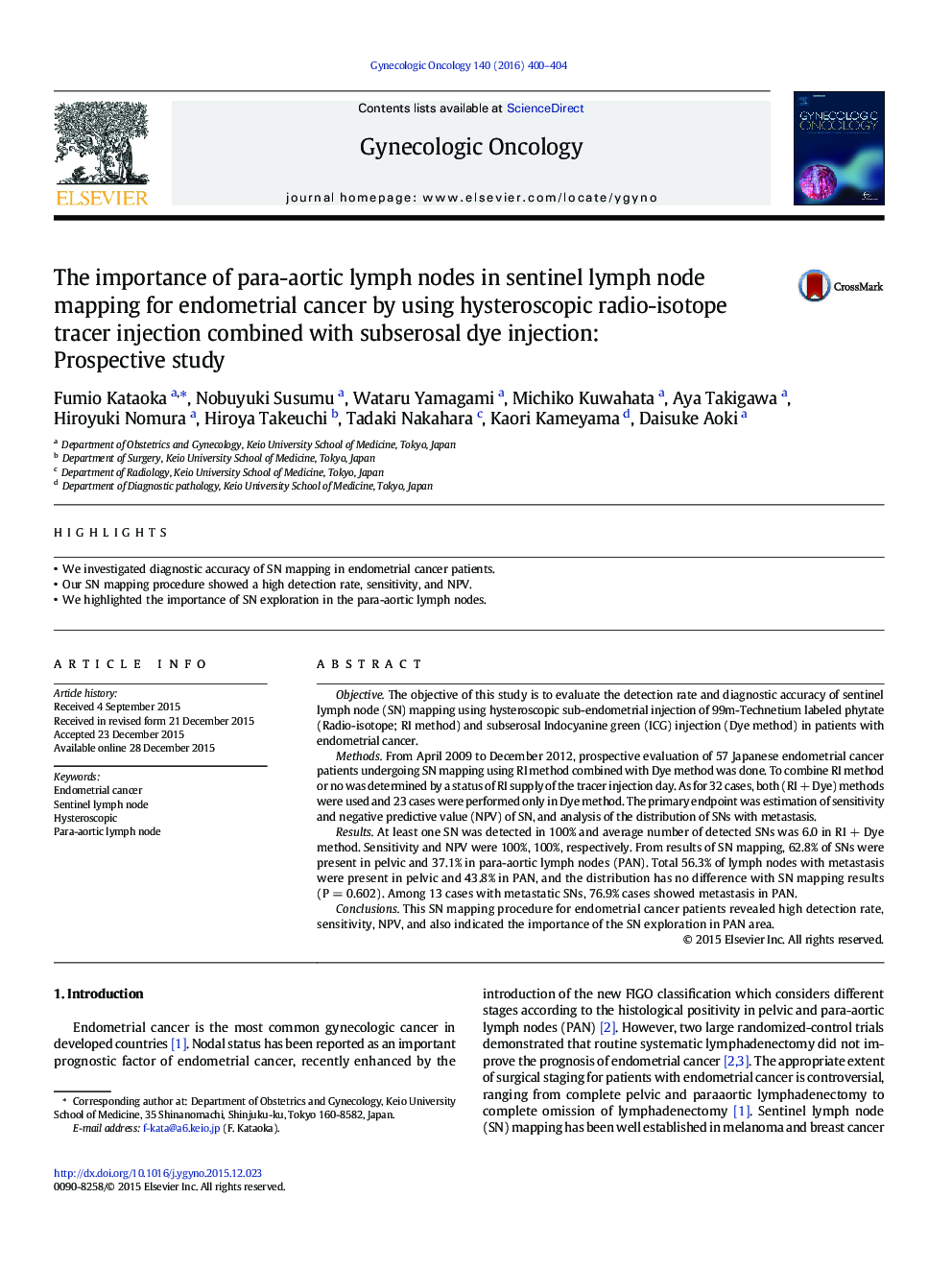| Article ID | Journal | Published Year | Pages | File Type |
|---|---|---|---|---|
| 3942968 | Gynecologic Oncology | 2016 | 5 Pages |
•We investigated diagnostic accuracy of SN mapping in endometrial cancer patients.•Our SN mapping procedure showed a high detection rate, sensitivity, and NPV.•We highlighted the importance of SN exploration in the para-aortic lymph nodes.
ObjectiveThe objective of this study is to evaluate the detection rate and diagnostic accuracy of sentinel lymph node (SN) mapping using hysteroscopic sub-endometrial injection of 99m-Technetium labeled phytate (Radio-isotope; RI method) and subserosal Indocyanine green (ICG) injection (Dye method) in patients with endometrial cancer.MethodsFrom April 2009 to December 2012, prospective evaluation of 57 Japanese endometrial cancer patients undergoing SN mapping using RI method combined with Dye method was done. To combine RI method or no was determined by a status of RI supply of the tracer injection day. As for 32 cases, both (RI + Dye) methods were used and 23 cases were performed only in Dye method. The primary endpoint was estimation of sensitivity and negative predictive value (NPV) of SN, and analysis of the distribution of SNs with metastasis.ResultsAt least one SN was detected in 100% and average number of detected SNs was 6.0 in RI + Dye method. Sensitivity and NPV were 100%, 100%, respectively. From results of SN mapping, 62.8% of SNs were present in pelvic and 37.1% in para-aortic lymph nodes (PAN). Total 56.3% of lymph nodes with metastasis were present in pelvic and 43.8% in PAN, and the distribution has no difference with SN mapping results (P = 0.602). Among 13 cases with metastatic SNs, 76.9% cases showed metastasis in PAN.ConclusionsThis SN mapping procedure for endometrial cancer patients revealed high detection rate, sensitivity, NPV, and also indicated the importance of the SN exploration in PAN area.
